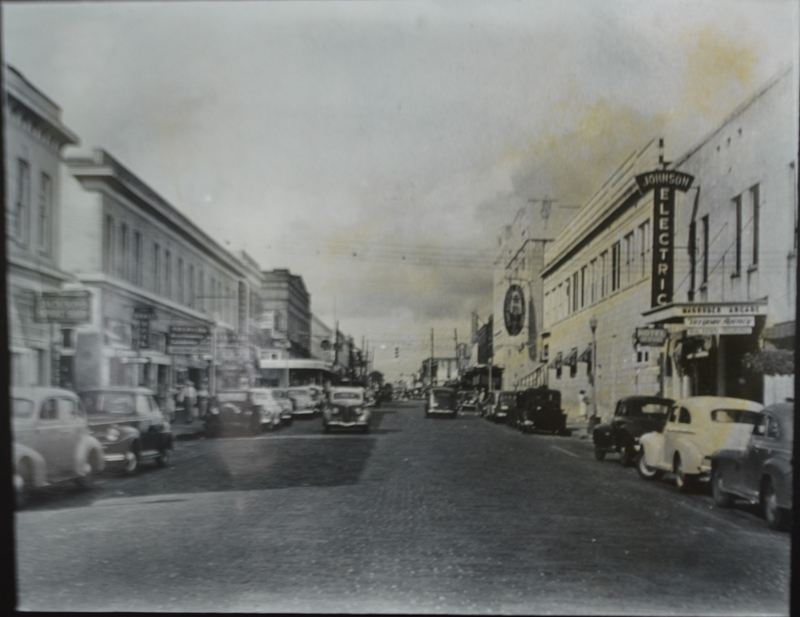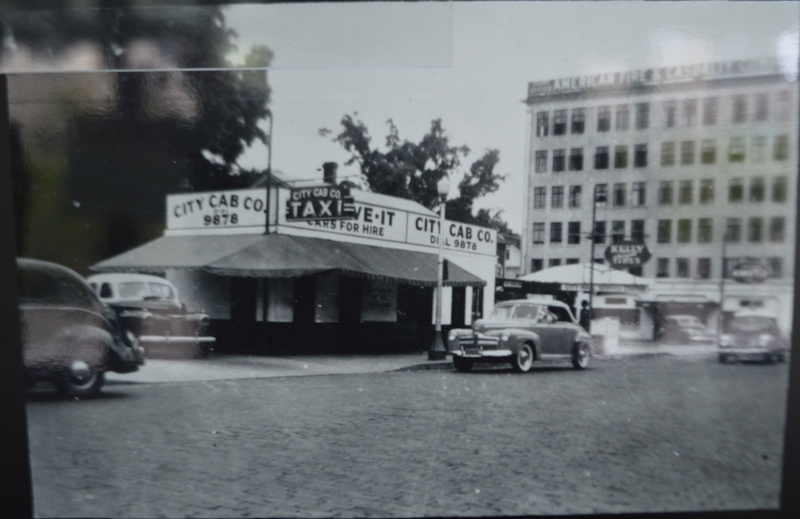Where to, Mack?
The postwar United States saw more than just a growth in population, thanks to the baby boomer generation. Consumerism was also on the rise and an automobile boom was trending by the end of the 40s. By 1950, suburban culture was dotted the landscape and the car quickly became a necessity. During this time, the United States was responsible for producing two-thirds of the world’s automobiles.
In Orlando, this trend is visible in the growth of the automobile dealership, car repair shops, and taxi services that became available during the decade. In 1946, there were 22 consumer auto dealers and, by 1949, there were more than 50 and rising. As a result of the automobile’s popularity, money spilled over into other industries, such as tourism and insurance.
The City Cab Co. was one of only two major taxi companies operating in Orlando during this era. To remain competitive, they offered services that one would not associate with a taxi company today, such as sightseeing tours. They also ran the filling station located just behind their offices at 243 S. Orange. Paul Mears had been with City Cab since its earliest days and would eventually see it grow into one of Orlando’s largest transportation companies, Mears Transportation.
The American Fire & Casualty Company, looming large in the background on the corner of S. Orange and Jackson, was an insurance company that called the Exchange Building its home for 18 years, before the company purchased the building and changed its name to the American Building in 1946. They offered a variety of insurance coverage including auto, which was categorized as "casualty insurance."
Businesses like these helped to create the community within Orlando. Before all the theme parks arrived, neighborhoods like these were able to develop on their own accord and at their own pace. The automobile was here to stay and would get us out of town when the time came; but for now, keep it in park and see more of what the block has to offer.
Bacon, Eve. "Post-War Building Era Begins." In Orlando: A Centennial History, 138. Vol. 2. Chuluota: Mickler House, Publishers, 1977.
Florida Polk's Orlando City Directory: Including Winter Park and Orange County. Orlando: R.L. Polk & Company, 1941.
Florida Polk's Orlando City Directory 1943-44: Including Winter Park and Orange County. Orlando: R.L. Polk & Company, 1944.
Florida Polk's Orlando City Directory: Including Conway, Maitland and Winter Park. Orlando: R.L. Polk & Company, 1945.
Homan, Lynn M., and Thomas Reilly. Orlando in Vintage Postcards. Arcadia Publishing, 2001.
Polk's Orlando (Orange County, Fla.) City Directory including Winter Park and Orange County Taxpayers ... Also a Buyers' Guide and Complete Classified Business Directory. Jacksonville, FL: R.L. Polk &, 1940.
"The Auto Industry, 1940 - 1959." 1998. http://web.bryant.edu/~ehu/h364/materials/cars/cars%20_60.htm (accessed October 1, 2014).
Tucker, Abigail. "The Tucker Was the 1940s Car of the Future." Smithsonian Magazine, December 2012. http://www.smithsonianmag.com/history/the-tucker-was-the-1940s-car-of-the-future-135008742/?no-ist (accessed October 1, 2014).

